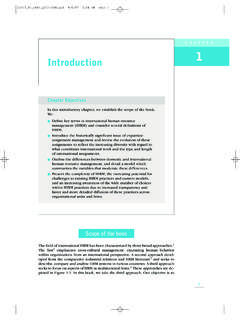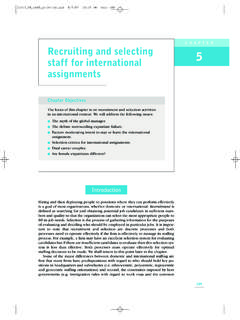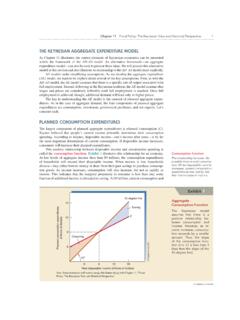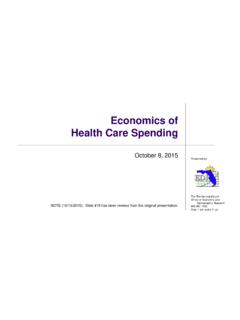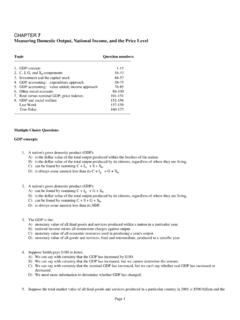Transcription of Practice Questions Q&A 23 - Cengage EMEA
1 Practice Questions to accompany Mankiw & Taylor: Economics 1 Chapter 23 1. a. Complete the following table. Answer: b. What is the largest expenditure component of GDP? Answer: Consumption c. Does investment include the purchase of company shares and bonds? Why? Answer: No, because that transaction is a purchase of an asset, not a purchase of currently produced capital goods. d. Do government purchases include government spending on unemployment benefit? Why? Answer: No, because unemployment benefits are expenditures for which the government receives no production in return.
2 E. What does it mean to say that net exports are negative? Answer: It means that imports exceed exports. 2. Suppose the base year in the following table is 2004. a. What is nominal GDP for 2004, 2005, and 2006? Answer: 100, 200, 400 Practice Questions to accompany Mankiw & Taylor: Economics 2 b. What is real GDP for 2004, 2005, and 2006? Answer: 100, 100, 100 3. Suppose the following table records the total output and prices for an entire economy. Further, suppose the base year in the following table is 2004. a. What is the value of nominal GDP in 2004?
3 Answer: 700 b. What is the value of real GDP in 2004? Answer: 700 c. What is the value of nominal GDP in 2005? Answer: 770 d. What is the value of real GDP in 2005? Answer: 720 e. What is the value of the GDP deflator in 2004? Answer: 100 f. What is the value of the GDP deflator in 2005? Answer: 107 g. From 2000 to 2001, prices rose approximately what percentage? Answer: (107 100)/100 = = 7% h. Was the increase in nominal GDP from 2000 to 2001 mostly due to an increase in real output or due to an increase in prices? Answer: Percent increase in nominal GDP = ( 770 700)/700 = = 10%.
4 Percent increase in prices = 7%, therefore most of the increase was due to prices. Practice Questions to accompany Mankiw & Taylor: Economics 3 4. Complete the following table. Answer: a. What year is the base year? How can you tell? Answer: Year 1, because the deflator = 100. b. From year 1 to year 2, did real output rise or did prices rise? Explain? Answer: Prices rose 20 percent and real output stayed the same. c. From year 2 to year 3, did real output rise or did prices rise? Explain? Answer: Prices stayed the same and real output rose 25 percent.

